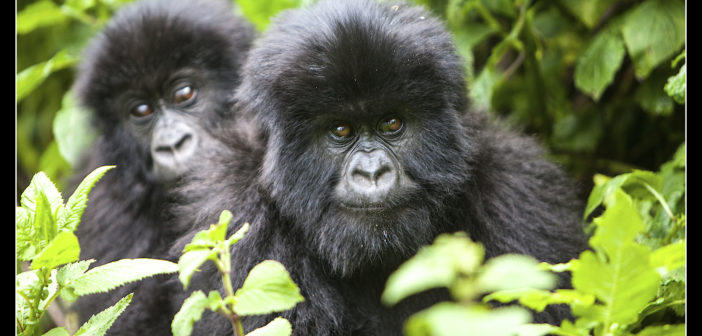By Margaret Sessa-Hawkins
Mountain gorillas are critically endangered no more.
According to the latest release of the International Union for Conservation of Nature (IUCN) Red List of Threatened Species, the Mountain Gorilla (Gorilla beringei beringei), one of two subspecies of the Eastern gorilla, whose numbers once sank to just 680 individuals in the wild, has now been downlisted to endangered. While the species is still under threat, intensive conservation actions such as anti-poaching patrols and the removal of snares have helped populations to rebound, and there are now more than 1,000 individuals in the wild.
Another beneficiary of strong conservation action is the fin whale (Balaenoptera physalus). Previously endangered, the species is now classified as vulnerable, thanks to international bans on commercial whaling in the North Pacific and the Southern Hemisphere. Historically threatened by over-exploitation for oil and meat, the global population of fin whales has roughly doubled since the 1970s.
“Today’s update to the IUCN Red List illustrates the power of conservation,” says Inger Andersen, IUCN Director General. “These conservation successes are proof that the ambitious, collaborative efforts of governments, business and civil society could turn back the tide of species loss.”
However, the Red List update also highlights that, despite notable conservation successes, many species are still in serious danger. In Lake Malawi, nearly 9% of the 458 fish species assessed are at a high risk of extinction. Three out of four species of chambo, Malawi’s most economically valuable fish, are critically endangered, putting chambo fisheries on the brink of collapse.
Lake Malawi is Africa’s third largest lake, and more than one-third of individuals in the country of Malawi depend on it for their food and livelihoods. However, over-fishing has had a dramatic effect on marine populations. Between 2000 and 2010, the population of chambo, for example, plummeted by 70 percent.

A chambo caught in a net on Lake Malawi. Image credit Patrick Dugan, CC BY-SA 3.0.
It isn’t just animals that are at risk from over-exploitation. A West African tree, the vene (Pterocarpus erinaceus) has been classified as endangered due to the extreme demand for its wood for use in furniture, flooring, household utensils and construction. Currently, less than 2% of the vene’s native forest is protected. Much of the tree’s range lies in conflict zones, where conservation is not a priority. This has led to illegal trade in vene timber. While most West African countries have legislation in place to protect the tree, these laws are often not enforced.
The IUCN Red List is a global analysis of the conservation status of plant, animal and fungi species around the world. To date, more than 96,000 species have been assessed, and a total of 26,840 are currently considered threatened with extinction.
BirdLife International is a member of the Red List Partnership and the official Red List Authority on birds. On November 22nd, BirdLife released the results of the 2018 update to the Red List for birds, including changes to the global status of a number of high-profile species and updates to the fact sheets for many more.
Featured image: two young mountain gorillas, seen in the wild in Rwanda. Image credit Philip Milne, CC BY-SA 3.0.






